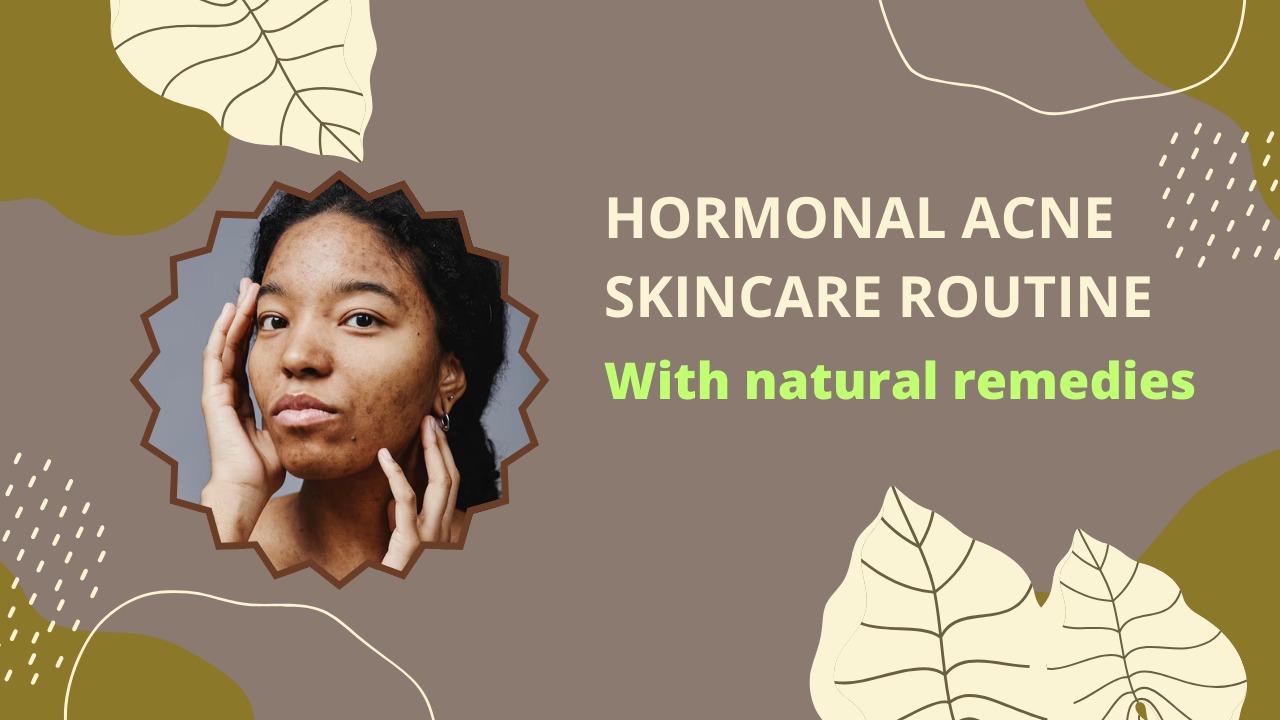Hormonal acne is a persistent skin issue that often results from internal hormonal imbalances. It commonly affects women during menstruation, pregnancy, or menopause, and can appear as deep, painful cysts primarily along the jawline and lower cheeks. Unlike occasional breakouts, hormonal acne is usually chronic and requires consistent care.
Developing a targeted hormonal acne skincare routine is crucial for managing flare-ups and reducing inflammation. Using gentle cleansers, non-comedogenic moisturizers, and products with ingredients like salicylic acid (in safe concentrations) or niacinamide can help balance oil production and calm the skin. Avoiding harsh scrubs and alcohol-based toners is essential to prevent irritation.
In addition to topical care, a proper hormonal acne skincare routine should also support overall skin health by minimizing stress, getting enough sleep, and maintaining a balanced diet. With patience and the right approach, you can reduce acne severity and restore your skin’s clarity and confidence.
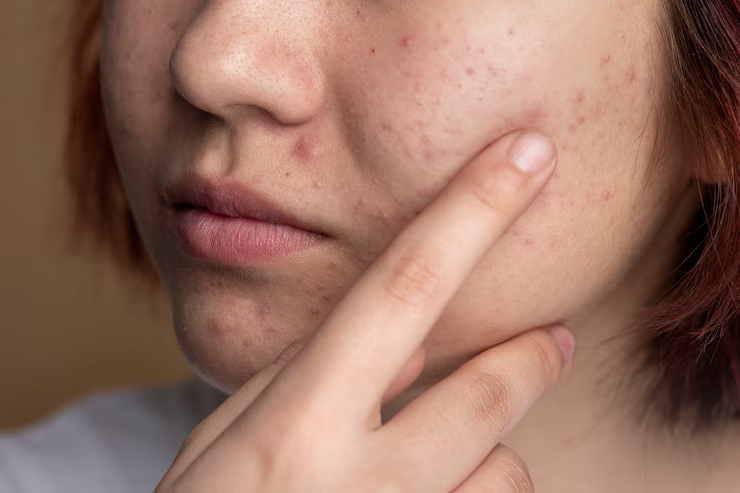
What is Hormonal Acne ?
Hormonal acne is acne triggered by fluctuations in hormone levels and is commonly experienced during key life stages such as puberty, menstruation, pregnancy, postpartum, and menopause. It may also stem from medical conditions like Polycystic Ovary Syndrome (PCOS), or as a reaction to stress, diet, or certain medications.
What sets hormonal acne apart is its pattern and severity. It often shows up around the jawline, chin, neck, and sometimes the cheeks. These breakouts tend to be deeper, cystic, inflamed, and often more painful than regular surface-level pimples. This makes it more difficult to treat with conventional acne products.
An effective hormonal acne skincare routine focuses on calming inflammation, balancing oil production, and keeping the skin barrier intact. Gentle cleansers, oil-free moisturizers, and ingredients like niacinamide, azelaic acid, or low-dose salicylic acid are ideal choices. Avoid over-drying products that can worsen sensitivity.
How and Why Does Hormonal Acne Form ?
Hormonal acne forms due to fluctuations in hormones—particularly androgens like testosterone—which increase the production of sebum, or skin oil. This excess oil mixes with dead skin cells and clogs pores, creating an ideal environment for acne-causing bacteria to thrive. The result is painful, inflamed breakouts often seen in hormonal patterns such as on the jawline, chin, and cheeks.
These hormonal shifts commonly occur during puberty, menstruation, pregnancy, postpartum, perimenopause, and menopause. Additionally, stress and conditions like Polycystic Ovary Syndrome (PCOS) can trigger hormonal imbalances that lead to breakouts. Unlike typical acne, hormonal acne is often cystic—deep, red, and painful bumps that don’t come to a head.
Hormonal acne more persistent is its root cause: internal changes. This makes topical treatments alone less effective, requiring a comprehensive approach that considers both internal balance and external care.
A well-structured hormonal acne skincare routine is crucial. It should include gentle cleansers, oil-controlling moisturizers, non-comedogenic products, and soothing ingredients like niacinamide or azelaic acid. Pairing this with healthy lifestyle habits can significantly improve skin health over time.
Hormonal acne occurs when androgens (male hormones like testosterone) increase and trigger:
Excess sebum (oil) production
Clogged pores
Bacterial overgrowth (especially Cutibacterium acnes)
Inflammation
These combined factors create the perfect storm for breakouts.
When Does It Typically Flare Up ?
Hormonal acne typically flares up during periods of hormonal imbalance or fluctuation. This includes puberty, menstruation, pregnancy, postpartum, perimenopause, and menopause. These phases cause a surge or drop in hormone levels—especially androgens—which stimulate excess oil production, clogging pores and triggering breakouts.
Many people notice breakouts appearing one to two weeks before their menstrual cycle starts, as estrogen drops and progesterone rises. This shift increases sebum production, making the skin more prone to inflammation and acne. Similarly, pregnancy-related hormone changes can lead to acne in the first or second trimester, while postpartum hormonal shifts may also trigger breakouts.
To manage these flare-ups, it’s important to follow a consistent hormonal acne skincare routine that caters to your skin’s changing needs. Using gentle, non-comedogenic products that help regulate oil and soothe inflammation—along with maintaining hormonal balance through diet and stress management—can reduce the severity and frequency of hormonal acne outbreaks.
Around your menstrual cycle (typically 1 week before your period)
During pregnancy or postpartum hormonal shifts
On starting or stopping birth control pills
If you have PCOS or other endocrine disorders
Due to chronic stress, poor diet, or lack of sleep
The Role of Skincare in Hormonal Acne
While hormonal imbalance is the root cause, skincare plays a major role in managing symptoms, preventing flare-ups, and healing the skin barrier.
Topical treatments can:
Reduce inflammation
Minimize oil production
Clear clogged pores
Soothe irritation
Improve skin texture and tone
Top Tips for a Hormonal Acne Skincare Routine
🥇 Use a Gentle, pH-Balanced Cleanser Twice Daily
Using a gentle, pH-balanced cleanser is a vital first step in any effective hormonal acne skincare routine. Hormonal acne-prone skin is often sensitive and reactive, so using harsh or overly drying products can make breakouts worse by stripping the skin of its natural oils and disrupting the moisture barrier.
A pH-balanced cleanser (close to the skin’s natural pH of around 5.5) helps maintain the skin’s acid mantle, which is essential for protecting against bacteria and irritation. Choose a sulfate-free, non-comedogenic formula that cleanses thoroughly without leaving your skin feeling tight or dry. Ingredients like aloe vera, green tea, or chamomile can provide soothing benefits while keeping your skin clear.
Wash your face twice daily—morning and night—to remove excess oil, dirt, and impurities. This routine ensures your skin stays clean without being overstimulated. A consistent hormonal acne skincare routine that begins with the right cleanser can significantly reduce breakouts and improve skin texture over time.
Why it works: Hormonal acne-prone skin often produces more oil, but harsh cleansers can strip the skin, causing it to overproduce oil again. A pH-balanced cleanser helps maintain the skin’s acid mantle, reducing irritation and breakouts.
Look for ingredients:
Salicylic acid (BHA): Penetrates pores and exfoliates
Zinc: Reduces oil production and soothes inflammation
Green tea extract: Calming and antioxidant-rich
Example Products:
CeraVe Foaming Facial Cleanser
La Roche-Posay Effaclar Purifying Gel
Benefits:
Cleanses without disrupting skin barrier
Reduces excess sebum
Prevents clogged pores
🥈 Incorporate a Targeted Exfoliating Toner or Serum (2–3x Weekly)
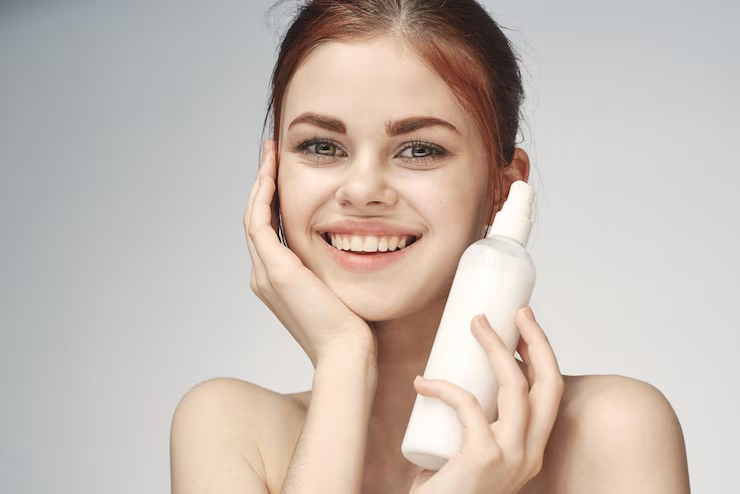
Incorporating a targeted exfoliating toner or serum 2–3 times a week can significantly enhance your hormonal acne skincare routine. Hormonal acne often results in clogged pores and a buildup of dead skin cells, which can be addressed effectively with gentle exfoliation.
Look for toners or serums containing alpha-hydroxy acids (AHAs) like glycolic acid or beta-hydroxy acids (BHAs) like salicylic acid. These ingredients help unclog pores, reduce inflammation, and promote skin cell turnover without harsh scrubbing. However, avoid over-exfoliating, as this can irritate the skin and worsen acne, especially if it’s cystic or inflamed.
Apply exfoliants after cleansing but before moisturizing. Start slowly—just 2 to 3 times per week—and monitor your skin’s reaction. This step helps to refine skin texture, brighten tone, and prevent future breakouts. When done correctly, exfoliating becomes a powerful step in a balanced hormonal acne skincare routine, keeping skin clear, calm, and healthier-looking.
Why it works: Exfoliating acids like AHAs and BHAs help to slough off dead skin cells, unclog pores, and reduce the appearance of acne marks and scars.
Look for ingredients:
Salicylic acid (BHA)
Glycolic acid (AHA)
Lactic acid (gentler AHA)
Example Products:
Paula’s Choice 2% BHA Liquid Exfoliant
The Ordinary Glycolic Acid 7% Toning Solution
Benefits:
Smooths texture
Reduces blackheads and whiteheads
Fades hyperpigmentation
🥉 Introduce a Niacinamide Serum
Introducing a niacinamide serum is a game-changer in any hormonal acne skincare routine. Niacinamide, also known as vitamin B3, is a powerful yet gentle ingredient that helps reduce inflammation, regulate sebum production, and strengthen the skin barrier—all essential for managing hormonal breakouts.
When hormones fluctuate, excess oil production and inflammation often lead to clogged pores and painful acne. Niacinamide works to calm the skin, minimize redness, and control oil without over-drying. It also helps fade dark spots and acne scars over time, promoting a more even skin tone.
Use a niacinamide serum after cleansing and toning, and before moisturizing. It pairs well with other acne-friendly ingredients like zinc and hyaluronic acid, enhancing hydration and healing. Incorporating this step into your hormonal acne skincare routine supports clearer, smoother skin and can significantly reduce the frequency and severity of breakouts, especially around the jawline, chin, and cheeks.
Why it works: Niacinamide (Vitamin B3) is a multi-tasking ingredient perfect for hormonal acne. It helps balance oil, reduces inflammation, and strengthens the skin barrier.
Look for concentration:
5–10% niacinamide is effective yet gentle.
Example Products:
The Ordinary Niacinamide 10% + Zinc 1%
Naturium Niacinamide Serum 12%
Benefits:
Minimizes pores
Calms redness
Improves skin tone and texture
🏅 Apply a Spot Treatment to Active Breakouts
Applying a spot treatment to active breakouts is an essential part of any hormonal acne skincare routine. These treatments target individual pimples with concentrated ingredients that work to reduce inflammation, kill bacteria, and speed up healing without affecting the surrounding skin.
Common ingredients in spot treatments include benzoyl peroxide, salicylic acid (in pregnancy-safe concentrations), and sulfur. These compounds help dry out the blemish, unclog pores, and reduce redness. Applying them directly to the pimple prevents it from worsening and may even stop it from forming fully when used early.
To use a spot treatment effectively, cleanse and tone your skin first. Once dry, apply a small amount of the treatment directly to the breakout using clean hands or a cotton swab. Finish with a gentle moisturizer to protect your skin barrier. Including this step in your hormonal acne skincare routine can minimize flare-ups and reduce scarring, helping you maintain clearer, healthier skin over time.
Why it works: Spot treatments are concentrated formulas meant to zap pimples quickly. They reduce size, redness, and lifespan of acne lesions.
Look for ingredients:
Benzoyl peroxide (kills acne-causing bacteria)
Sulfur (dries out blemishes and reduces oil)
Tea tree oil (antibacterial and anti-inflammatory)
Example Products:
Clean & Clear Persa-Gel 10 (Benzoyl Peroxide)
Mario Badescu Drying Lotion (Sulfur + Calamine)
Benefits:
Reduces size of pimples overnight
Prevents spread of bacteria
Speeds up healing process
🎖️Don’t Skip Moisturizer (Even for Oily or Acne-Prone Skin)
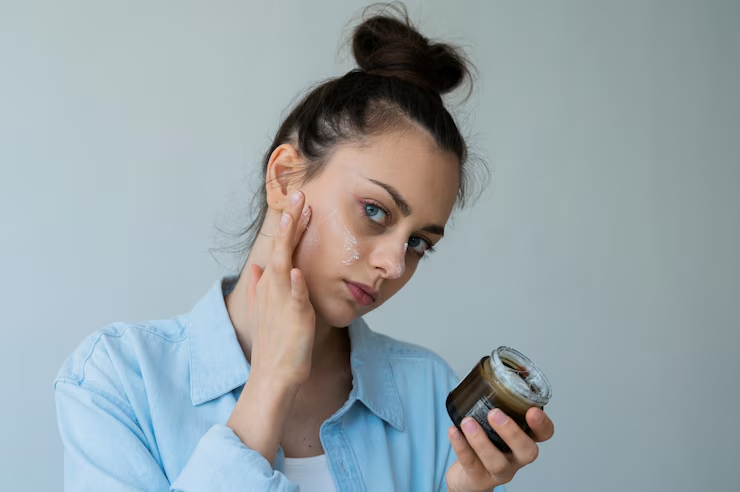
Not skipping moisturizer is a critical step in any effective hormonal acne skincare routine, even for those with oily or acne-prone skin. Many people mistakenly think that moisturizing will worsen their breakouts, but in reality, dehydrated skin can actually produce more oil to compensate, leading to clogged pores and more acne.
Choosing the right moisturizer is key. Opt for lightweight, oil-free, non-comedogenic formulas that hydrate the skin without clogging pores. Ingredients like hyaluronic acid, ceramides, and niacinamide can help soothe inflammation, strengthen the skin barrier, and maintain proper hydration levels—especially important when using drying treatments like salicylic acid or benzoyl peroxide.
Consistently moisturizing morning and night helps balance your skin’s natural oil production, reduces irritation, and supports healing. Including a gentle, hydrating moisturizer in your hormonal acne skincare routine ensures your skin stays healthy, resilient, and less prone to future breakouts, making it a non-negotiable step in your acne-fighting regimen.
Why it works: Dehydrated skin signals the body to produce more oil, which can worsen acne. A lightweight, non-comedogenic moisturizer hydrates without clogging pores.
Look for ingredients:
Hyaluronic acid (hydrating)
Ceramides (barrier repair)
Panthenol (soothing)
Example Products:
CeraVe Daily Moisturizing Lotion
Neutrogena Hydro Boost Water Gel
Benefits:
Maintains hydration
Calms irritated skin
Prevents overproduction of oil
🎯 Use a Clay Mask 1–2x a Week
Using a clay mask once or twice a week can be a powerful addition to your hormonal acne skincare routine. Clay masks help draw out impurities, absorb excess oil, and unclog pores—common issues when dealing with hormonal acne. They can also calm inflammation and reduce the size of active breakouts without over-drying the skin.
Look for masks that contain ingredients like kaolin, bentonite, or French green clay. These are gentle yet effective at removing deep-seated dirt and oil. Some formulas may also include soothing agents like aloe vera, chamomile, or zinc to reduce redness and irritation, making them perfect for sensitive, acne-prone skin.
Regular use of a clay mask in your hormonal acne skincare routine helps maintain clearer, more balanced skin over time. It’s a preventive step that not only targets current breakouts but also helps reduce the frequency of future flare-ups by managing excess sebum and keeping pores clean.
Why it works: Clay masks help absorb excess oil, decongest pores, and reduce inflammation—all crucial for managing hormonal acne.
Look for clays:
Bentonite clay
Kaolin clay
Sulfur
Example Products:
Aztec Secret Indian Healing Clay
Innisfree Super Volcanic Pore Clay Mask
Benefits:
Detoxifies skin
Reduces size of active breakouts
Prevents future acne
🧴 Add a Retinoid or Retinol at Night
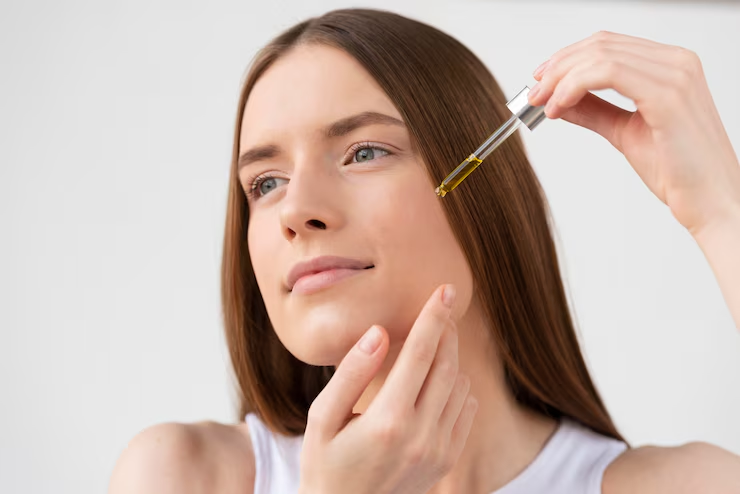
Adding a retinoid or retinol to your nighttime regimen can significantly enhance your hormonal acne skincare routine. Retinoids, derived from vitamin A, are known for increasing cell turnover, preventing clogged pores, and reducing inflammation—all crucial in managing hormonal acne. They also help fade acne scars and even out skin tone over time.
Start slow by applying a pea-sized amount of retinol two to three times per week, gradually increasing as your skin builds tolerance. Use it only at night, and always follow up with a hydrating moisturizer to minimize dryness or peeling. It’s important to avoid combining retinoids with other potent actives like AHAs, BHAs, or vitamin C in the same routine unless directed by a dermatologist.
Including retinoids in your hormonal acne skincare routine helps target deep, cystic acne from the root. Consistent use can lead to fewer breakouts, smoother skin texture, and a healthier-looking complexion over the long term.
Why it works: Retinoids promote cell turnover, prevent clogged pores, and fade acne scars. They are one of the most studied and effective treatments for all types of acne, including hormonal.
Types of retinoids:
Over-the-counter: Retinol
Prescription: Tretinoin, Adapalene (also OTC now)
Start slow:
2–3 times per week to avoid irritation.
Example Products:
Differin Gel (Adapalene 0.1%)
The Ordinary Retinol in Squalane
Benefits:
Prevents new acne
Fades post-acne marks
Improves skin texture and tone
🧼 Always Wear Sunscreen (SPF 30 or Higher)
Wearing sunscreen daily is a non-negotiable step in any effective hormonal acne skincare routine. Sun exposure can worsen inflammation, darken acne scars (post-inflammatory hyperpigmentation), and increase skin sensitivity—especially if you’re using treatments like retinoids or exfoliants. SPF helps protect the skin’s barrier and supports healing, making it essential even on cloudy days or when indoors near windows.
Choose a lightweight, non-comedogenic sunscreen with SPF 30 or higher. Look for formulas labeled “oil-free” or “for acne-prone skin” to avoid clogging pores. Mineral-based sunscreens with zinc oxide or titanium dioxide are great options for sensitive or acne-prone skin, as they provide broad-spectrum protection without irritation.
Incorporating sunscreen into your hormonal acne skincare routine not only prevents further skin damage but also helps fade dark spots faster and keeps your complexion even-toned. Make it the final step of your morning routine to maintain healthier, clearer skin in the long run.
Why it works: Sun exposure can worsen acne, cause inflammation, and darken scars. Sunscreen protects your skin from UV damage and enhances healing.
Look for:
Mineral sunscreens (zinc oxide or titanium dioxide)
Non-comedogenic formulas
Example Products:
EltaMD UV Clear SPF 46
La Roche-Posay Anthelios Mineral SPF 50
Benefits:
Prevents hyperpigmentation
Supports skin recovery
Protects against premature aging
Bonus Tips for Hormonal Acne Management
✅ Avoid touching your face – Spreads bacteria
✅ Wash pillowcases and phone screens regularly
✅ Eat a low-glycemic diet (avoid sugar, dairy, processed foods)
✅ Stay hydrated – Water helps flush toxins
✅ Reduce stress – Cortisol (stress hormone) aggravates acne
When to See a Dermatologist
If you’ve tried all these skincare steps for several months and are still experiencing moderate to severe acne, consult a dermatologist. You might need hormonal treatments like:
Oral contraceptives
Spironolactone
Isotretinoin (Accutane)
Professional peels or laser therapy
Conclusion
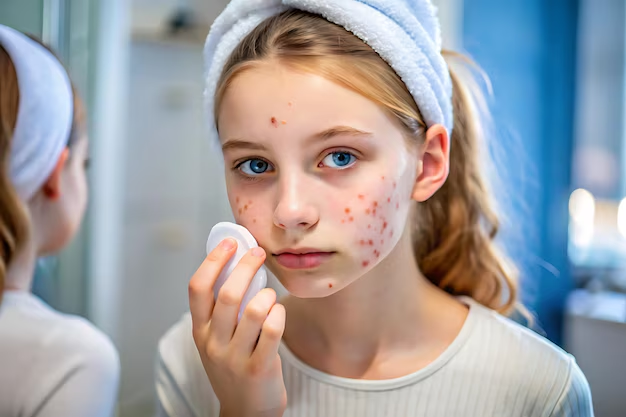
Clear skin doesn’t happen overnight—especially when it comes to hormonal acne. The key to real improvement lies in consistency and patience. A thoughtful hormonal acne skincare routine that’s gentle yet targeted can gradually help reduce breakouts and soothe inflammation over time.
Following the 8-step routine shared above helps create a solid foundation for managing flare-ups. From using a pH-balanced cleanser to applying SPF daily, each step plays a vital role in protecting and restoring your skin barrier. The right ingredients, applied regularly, work together to unclog pores, reduce redness, and prevent future breakouts.
Most importantly, don’t give up too soon. Results from a hormonal acne skincare routine may take weeks to show, but your skin needs that time to heal and rebalance. Stay committed to your routine, support it with healthy habits, and you’ll be rewarded with clearer, more resilient skin and renewed confidence in your appearance.
FAQs
Q1. What is the best hormonal acne skincare routine ?
A good hormonal acne skincare routine includes a gentle cleanser, exfoliating toner (2–3x weekly), niacinamide serum, spot treatment, moisturizer, and SPF. Retinoids and clay masks can also help reduce breakouts.
Q2. How long does it take for a hormonal acne skincare routine to work ?
Results from a hormonal acne skincare routine can take 4 to 12 weeks. Consistency and the right ingredients are key for visible improvement in skin texture and reduction of acne.
Q3. Can I use retinol in my hormonal acne skincare routine ?
Yes, retinol or retinoids are often recommended in a hormonal acne skincare routine to unclog pores and promote cell turnover—but start slow and use at night with sunscreen during the day.
Q4. Should I moisturize if I have oily, acne-prone skin ?
Absolutely. Every hormonal acne skincare routine should include a non-comedogenic, lightweight moisturizer to maintain skin barrier health and prevent overproduction of oil.
Q5. What ingredients should I avoid in a hormonal acne skincare routine ?
Avoid heavy oils, alcohol-based toners, and high concentrations of salicylic acid or benzoyl peroxide unless advised. A gentle hormonal acne skincare routine works best for long-term results.

